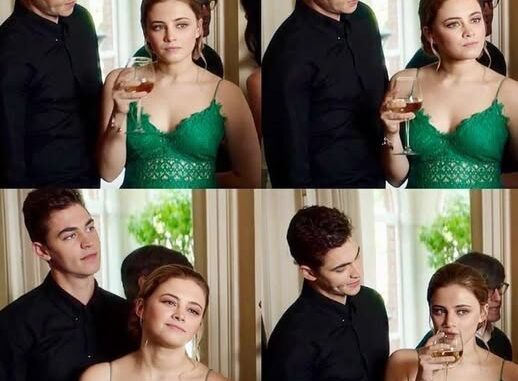
If you watched After Ever Happy, the fourth installment in the passionate After film series, you might have noticed something different about Tessa Young—specifically, her hair. Played by Josephine Langford, Tessa appears in the film with a hairstyle that seems a little too perfect, leading many fans to wonder: Is she wearing a wig? And if so, why?
The short answer is yes—Josephine Langford does wear a wig in After Ever Happy. But the full story behind the decision is far more nuanced and connected to the complex production process of the After films. Let’s break down exactly what happened, why the wig was necessary, and how fans reacted to the surprising change.
To understand why Tessa’s hair looks different in After Ever Happy, we need to look behind the scenes. The production of After We Fell and After Ever Happy was conducted back-to-back in late 2020 during the height of the COVID-19 pandemic. Filming both movies at once was a strategic decision—partly to save costs, partly to accommodate travel restrictions, and partly to ensure continuity.
However, due to the intense filming schedule and time constraints, actors didn’t always have the ability to change their look organically between scenes or reshoots. That’s where the wig came in.
According to behind-the-scenes interviews and fan speculation later confirmed by sources close to the production, Josephine Langford had cut or dyed her hair after finishing the principal photography for After We Fell. But when reshoots and pickups were scheduled for After Ever Happy, her natural hair no longer matched Tessa’s signature brunette waves.
In a series like After, where emotional continuity and visual storytelling are key, even small changes can throw off the viewing experience. Tessa’s appearance—especially her hair—had become a symbol of her evolving character. Changing it mid-story would have been jarring for viewers, especially given the already emotionally intense tone of After Ever Happy.
The wig was chosen to resemble the soft, natural waves that had become Tessa’s signature look throughout the series. While it wasn’t perfect and some viewers noticed the difference immediately, the goal was to preserve visual continuity rather than distract.

After the film’s release, fans quickly took to social media platforms like Twitter, Reddit, and TikTok to point out the difference in Tessa’s hair. Some were confused, others found it distracting, and a few made memes about the noticeable change. But for the most part, once the behind-the-scenes context became clear, the fanbase was understanding.
Many viewers praised Langford for continuing to bring emotional depth to her role, wig or not. In fact, several fans argued that the authenticity of her performance far outweighed the minor distraction of a hairpiece.
“I noticed the wig right away,” one fan tweeted, “but honestly, the scene where she finds out what happened to her dad made me forget everything else. Josephine’s acting was that good.”
Others appreciated the effort to maintain continuity under difficult filming circumstances, especially given the pandemic-related challenges that many productions were facing at the time.
Tessa isn’t the first character in a romance drama—or any drama, really—to wear a wig on screen. In fact, wigs are incredibly common in the film industry, used for everything from reshoots to transforming an actor’s look without damaging their natural hair.
Actors like Emilia Clarke (Game of Thrones), Millie Bobby Brown (Stranger Things), and even Chris Evans (Avengers) have all worn wigs for roles, often without viewers ever noticing.
In Langford’s case, the wig wasn’t meant to be a dramatic transformation. It was a practical solution, necessary to maintain visual consistency between two films shot under tight and often unpredictable conditions.
